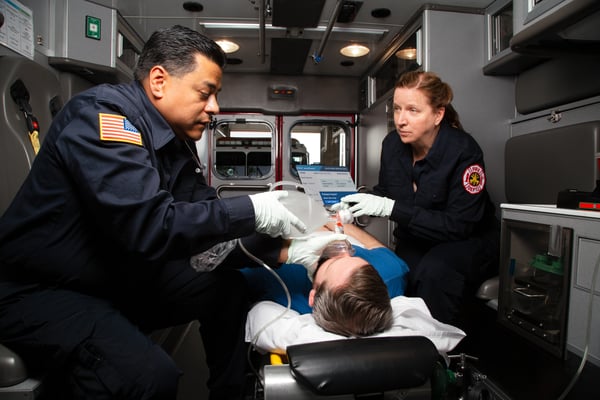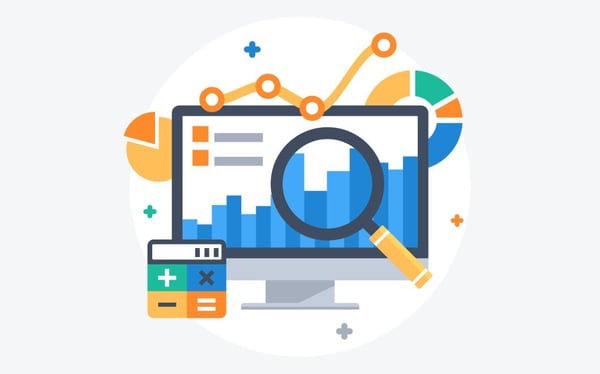News Alert: New ePCR Integration Simplifies EMS Data Management and Enables Better Care Coordination
Three Ways Every EMS Agency Should Be Leveraging ePCR Data
Your ePCR is a vast repository of data
Was this information valuable?

Your ePCR is a vast repository of data. So, what are you going to do with it?
(6 min read) Every day, EMS crews in the field enter a ton of data into patient care reports. Some of it is required by the state in which you operate, and some of the data is unique to your agency. What should you do with this gold mine of data? Maybe you’ve wondered how many patients you transport who have cardiac history or how many are taking high blood pressure medications. You could know the answer to these and so many more questions by mining your electronic patient care reports (ePCR). The data is there, already entered on a regular basis by your crews. Behind it is a world of knowledge and insight waiting to be tapped.

Consider Cleveland EMS, who was kind enough to test ZOLL Data Systems’ COVID-19 built-in ePCR reporting. Their innovative use of data collected by their field crews to trend COVID-19 exemplifies two important ways to leverage patient data in aggregate: 1) to partner more effectively with other first responders, medical providers, and government entities; and, 2) to establish benchmarks and extract insights that can help the agency with planning and staffing. In addition, EMS agencies can use ePCR data to inform operations, quality improvement, and training initiatives. Let’s explore each of these data analysis use cases in more detail.
Collaborating with Public Safety and Government Health Agencies to Anticipate Needs
For the past three years, Cleveland EMS has been tracking call volume by day in an effort to spot unusual spikes in their activity. They’ve also been examining cardiac arrest calls during the same period so that they can examine the impacts of the coronavirus pandemic alongside the long-term trend. Since the onset of the pandemic, they’ve been collaborating with local and regional partners, such as the local police department in order to share data and track mass gatherings alongside their possible COVID-19 calls. This allows the local government and health experts to look for correlations and to help anticipate developing hot spots and/or spikes in hospitalizations.
They are also sharing data with their state health department, which is providing them with a list of patients who have confirmed COVID-19 diagnoses. Cleveland EMS can then cross-reference this new data source with their own call data to identify trends. For example, they’ve already spotted several patients who were transported multiple times with progressively worsening symptoms and who later tested positive for COVID-19. Time will tell whether this is a long-term trend with predictive value. As more ePCR data is collected, the answer will emerge.

Comparing State or Regional Benchmarks with Yours to Identify Trends and Best Practices
At the same time, the agency determined that their cardiac arrest data merited a closer look, because as the pandemic stretched from weeks into months, other states witnessed a statewide decline in cardiac arrest calls. Cleveland EMS’ medical director wanted to know if their agency was experiencing the same decrease in call volume. Because the data is collected in their ePCR software, they were able to readily create reports to analyze the situation and determine that their cardiac call volume was trending in line with the previous year.
When I consider ePCR data, I like to think beyond the obvious and imagine all the questions we could answer with the data sitting right at my fingertips. Wouldn’t it be useful to know which medics are administering narcotics, how often, under what circumstances, and at what average dosage? With electronic charting, you can know the answer. Armed with this information, you could compare your agency’s numbers against regional or state benchmarks and quickly see how your agency stacks up. Going a step further, this would allow you to assess whether crews are operating according to best practices, whether training is warranted, or even whether you should tweak your practices around which medications to have on hand and in what quantities.

Another interesting data pull would be how many patients with cardiac history are transported by month. Assuming that you’re tracking patient history in your ePCR (of course you are—that’s a best practice!), you have the ability to analyze whether there is a seasonal component to your calls. Maybe knowing that during snow-shoveling season, you have an annual spike in cardiac-related calls, you determine that you should invest in additional equipment.
Leveraging Analytics for Crew Education, Quality, and Operational Improvements
Have you ever thought of using your chart data as a teaching tool for your crews? Pick any subject: are crews administering correct doses of medications within protocol? How many times are they dosing outside protocol? Are medics following the prescribed sequence for STEMI patients? These are all examples of critical information that should be analyzed to drive education priorities and shared with crews to support quality improvement.
Even when data shines a spotlight on problems, that doesn’t have to be a bad thing. It’s not about someone getting in trouble; it’s about understanding where opportunities for improvement exist and taking prescriptive action to remedy them. Data is a tool you can use to develop better paramedics and EMTs, as well as to identify and celebrate all the things your agency is doing well.
Sophisticated Data Analysis Is Within Your Reach
Data drives knowledge, and knowledge enables confident decision-making. Electronic documentation makes extracting information fast and easy, especially compared to the days of paper charting. Rich data analysis is accessible to everyone; you don’t need to be a statistics expert or computer whiz, although basic Excel skills come in handy.
Looking ahead, cloud-based ePCR software will be the way of the future for many agencies, thanks to lower initial and maintenance costs and the many benefits associated with software-as-service (SaaS) platforms (scalability, security, and reliability among them). The best SaaS ePCR solutions provide built-in analytic tools that enable users to run standard reports or to customize them to meet their agency’s needs without ever opening a spreadsheet.
Whether hosted or SasS, progressive agencies understand that ePCR data has the potential to be much more than a documentation tool for one individual’s experience(s) at a point or points in time. In aggregate, your agency’s ePCR data has the power to unlock operational insights that can help you make better business decisions ranging from the kind of credentials to have on staff, to how you equip your vehicles, to evaluating non-emergent service opportunities, to anticipating the next surge. Don’t let this treasure trove of information go to waste.
Read more about ePCR data management:
Related Posts
How STAT MedEvac Connected Device, Software, and Data Technology To Enhance QA and Elevate Care
Podcast: 4 Ways ePCR Software Can Relieve EMS’ Biggest Headaches
ZOLL Pulse Blog
Subscribe to our blog and receive quality content that makes your job as an EMS & fire, hospital, or AR professional easier.
ZOLL Pulse Blog
Subscribe to our blog and receive quality content that makes your job as an EMS, fire, hospital, or AR professional easier.




